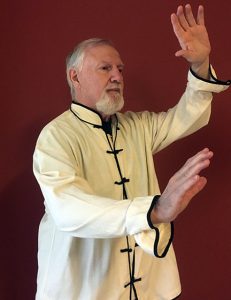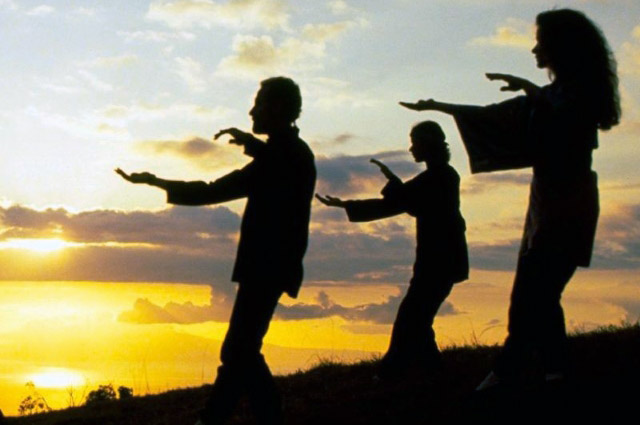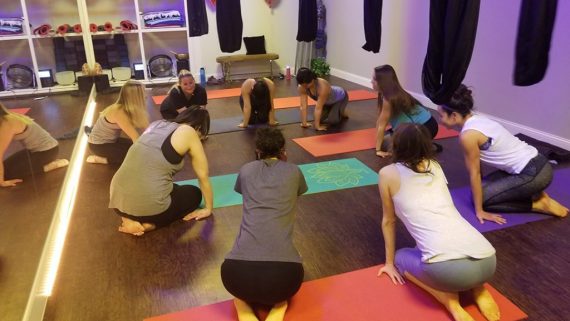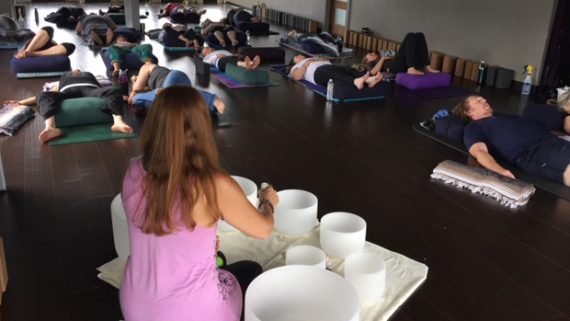Tai Chi for Health
Tai Chi for Health
Meet Tim Franz

DYM: Many people don’t know or understand Tai Chi. They hear “martial arts” and they think it’s going to be combative.
Tim: Tai Chi Chuan is the martial art. The literal translation is Grand Ultimate Fist. Many teachers of Tai Chi don’t know the martial application of the form. My teachers taught me the applications, so I could better visualize and understand the intention of the movements. Many people have no interest in the martial aspects.
The term Tai Chi refers to practicing the form for health and as a method for calming the mind while relaxing the body. There are many studies documenting the positive impact on the body and mind.
DYM: Can you explain more about the practice of Tai Chi?
Tim: There are many styles of Tai Chi available from as simple as a form known as the Beijing Form to several traditional family styles that are very complex. My experience is those that start with the simple Beijing Form develop a taste for Tai Chi and then seek out more advanced styles.
Learning any style of Tai Chi takes time and practice because you need to learn how to move differently. Tai Chi is based on Yin/Yang theory and the form is ever changing. It is progress not perfection. I tell my students just move and breathe because whatever they do can be adjusted. Giving one’s self the time to learn is important.
For those who are not inclined to invest the time needed, I suggest Qigong, which is sometimes known as Chinese yoga. Most of the exercises are done standing up right and involve slow, gentle movements. Here again, Qigong often leads to learning Tai Chi.
DYM: Why and when did you decide to begin practicing Tai Chi?
Tim: Many years ago, I worked in San Francisco close to Chinatown and I walked through a park each morning and I’d see several Chinese men doing a slow-motion dance. I found it fascinating, so I asked around about what where they are doing. The people in my office called it shadow boxing, it was only later that I learned it was Tai Chi.
Several years later, when I was living in Orange County, I decided to learn Tai Chi and I went to a Fun Ed type class and learned what is known as Guangping Tai Chi. I was also practicing Kenpo Karate. Unfortunately, I was also drinking and smoking to excess. I never took my practice seriously. Eventually, I hit my bottom so to speak and began my recovery journey.
I moved to Dallas in 1980 and after a couple of years, I began to drink again. I sunk fast and came back to recovery. It was then that I decided to go back to the martial arts, but I had to quit because of injuries. I looked around and remembered Tai Chi. I looked in the phone book and found the Tai Chi Center, which was in Garland then. I started going to classes and learned a special form of Tai Chi. I was good at it, so my teacher entrusted me with helping other students.
DYM: You eventually become an instructor. Can you describe the process you went through?
Tim: Yes, I did. My teacher began to send me to teach through Plano Parks and Recreation, Fun Ed and leading some of the classes at the Tai Chi Center. I think this was about 4 or 5 years into it. The process was simple: Practice! I began to learn how to learn Tai Chi. Something just clicked in. My teachers were very exacting, constantly tweaking my form to get it how it should be. There is a range in which movements can be done, my teachers help me stay within the range. Willingness to stay with it was and is the key.
I also started judging Tai Chi tournaments. This helped me improve as a teacher.
DYM: There are many health benefits to Tai Chi, what health benefits did you personally notice?
Tim: I got a sense of continuity, I could see my progress and that gave me a lot of satisfaction. Tai Chi also helps reduce inner tension and mental anxiety that I was experiencing. It still does… once I get out of my own way.
DYM: Explain the similarities of Tai Chi and yoga?
Tim: They are similar in that each practice attempts to join the mind and body. In Tai Chi, Yi leads the Qi. This means the mind leads the energy. Both build energy in the body and disciplines the mind to stay with it. Tai Chi is a series of upright movements, one flowing into another. Yoga is similar when one pose flows into another. Tai Chi is less strenuous than yoga and can be done without any special clothing or equipment. If you can move and breathe, you can do Tai Chi.
DYM: What was the most difficult aspect of Tai Chi when you first started practicing?
Tim: Staying motivated because it is a slow start. For example, it is common to learn only one or two movements in a one-hour session. At this rate, it can take 52 classes to get to the end of a 108-movement form. No one makes it for all 52 so they find themselves in catch up mode so people sometimes drop out.
Consistency is the key. One must practice almost daily, which means making time to do it. Showing up for class is important.
DYM: What should people know before they come to your Tai Chi class and what should they expect during your class?
Tim: I am up front with people in that I explain what is needed to learn Tai Chi. I will give as much as they do, which means if you show up and if you practice, I will work hard to get you where you want to be.
Plus, I try to make it fun. There’s a lot of laughter in my classes.
Many don’t like the idea of a long term practice. So, I recommend Qigong as an alternative. Qigong is an ancient Chinese practice to stimulate energy, increase longevity and calm the mind. Again, there is no special equipment or clothing needed. If you can stand, you can do Qigong. I enjoy teaching Qigong…it’s a lot of fun.
DYM: Is there a moment in your practice or during teaching that stands out to you?
Tim: Yes, I was competing in a tournament in Tulsa. I received an exceptional score from one of the judges. I later found out she was the lineage holder for Eagle Claw Kung Fu. She was the leading teacher of that style of martial art, so she knows her stuff.
Two of my early students were an elderly couple, who came to class every week and to every make up class offered. They would only work with me. He didn’t give a flip, but she loved it. I had so much fun working with them.
DYM: What inspires you to keep practicing Tai Chi throughout the years?
Tim: I’ve rededicated myself to the study of Tai Chi. I have the time now that I am retired, and I do it for health reasons. I’m currently learning another style, my fourth. Someday I will return to California and relearn Guangping, my first style. I like teaching it to others, especially to those who are recovering. I am convinced that Tai Chi and Qigong can help those trying to change their lives.
DYM: What has Tai Chi taught you about yourself?
Tim: I’ve learned that there is value in surrendering, yielding and re-directing energy coming my way. In other words, I no longer scream before I am hurt. I can wait to see what unfolds before doing anything. Patience!
DYM: What would you say to someone who is thinking about trying Tai Chi for the first time?
Tim: Visit several teachers and try a class. If you find a teacher you like, stay and learn. Remember consistency is the key. Practice.
I lucked out because my teachers studied for many years in Taiwan with a noted master of Tai Chi Chuan. His name is Lu Hung Bin. He was the real deal and I was fortunate to meet him several times.
Through the years I’ve been to many Tai Chi seminars with so called masters and each time I came away counting my blessings for having the teachers I do. So many teachers rely on the halo effect to lead the student in almost a cult like admiration. My teachers are not like that. They expect each student to do their best and at some times to surpass the teacher.
DYM: Tell us where you are currently teaching.
Tim: Right now, I am teaching Qigong on Wednesdays at 11 o’clock at Sun Yoga Center in Richardson. I also have one private Tai Chi student. I like to teach outside, preferably close to water because of the energy. Teaching outside reinforces the Taoist ideal of living in harmony with the world.
Everyday in China, many people head for the parks to perform Tai Chi either in groups or by themselves. It is quite impressive. The younger people are doing the Beijing Form while older people are doing old traditional forms. I did go to a park once and did the Beijing Form with a group. They were quite nice and smiled a lot. Some even laughed but that is because it is rare for them to see a Westerner doing Tai Chi.
DYM: Thank you Tim for sharing your story with us. Tai Chi is going to be a fun new adventure for us here at the magazine. I hope we get a private class!
Tim: Of course!
More Information:
Tim Franz teaches Tai Chi at Sun Yoga Center in Richardson, Texas. You can email him at [email protected]









